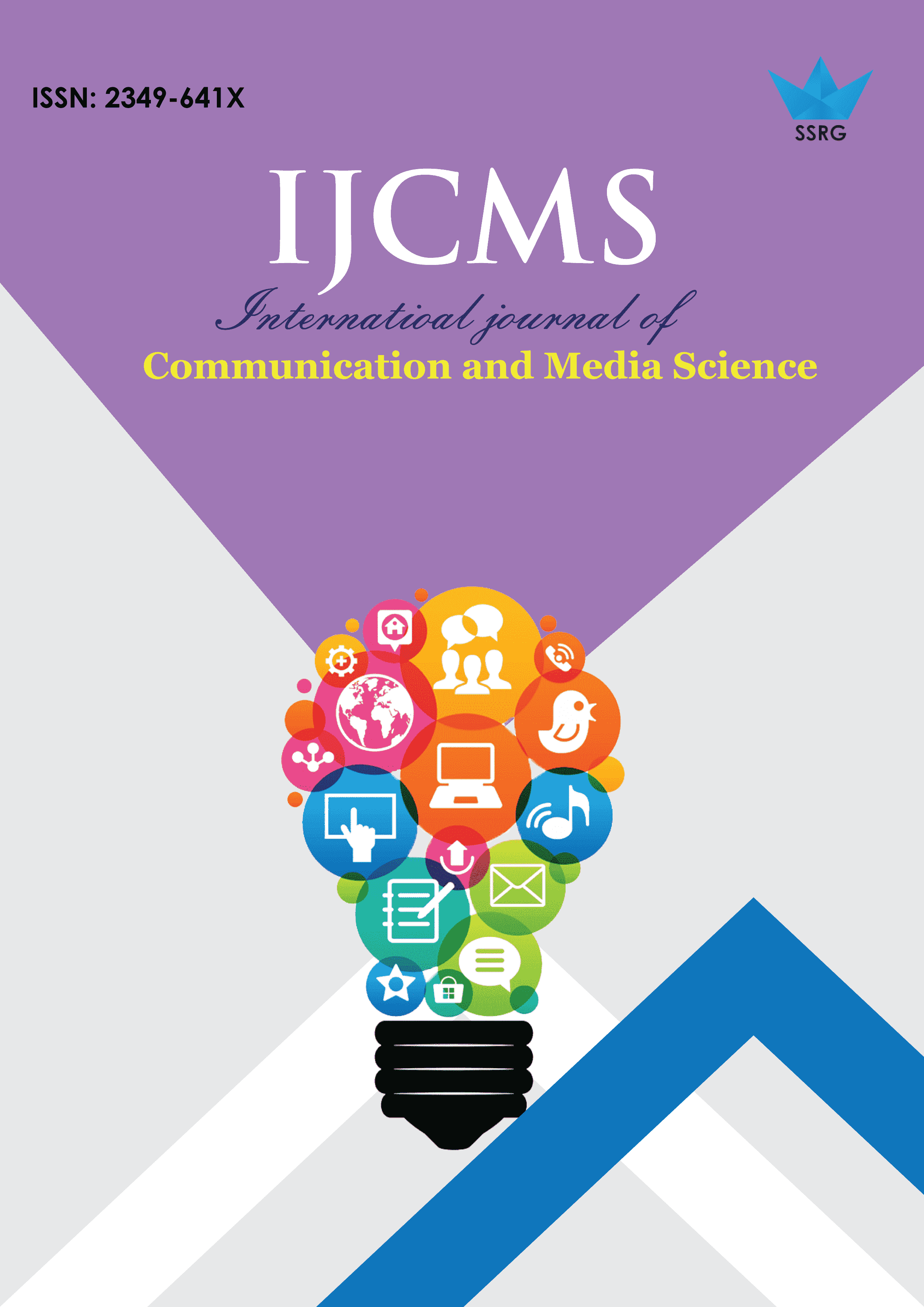Social and Individual Impacts of Social Media and Its Interactions with Traditional Media

| International Journal of Communication and Media Science |
| © 2017 by SSRG - IJCMS Journal |
| Volume 4 Issue 2 |
| Year of Publication : 2017 |
| Authors : N. Gizem Koçak |
How to Cite?
N. Gizem Koçak, "Social and Individual Impacts of Social Media and Its Interactions with Traditional Media," SSRG International Journal of Communication and Media Science, vol. 4, no. 2, pp. 1-7, 2017. Crossref, https://doi.org/10.14445/2349641X/IJCMS-V4I2P101
Abstract:
Web 2.0 caused a radical change in users’ role by bringing them into the center of a production process. Unlike traditonal media in which individuals are just a passive consumer of contents, social media enables the users to become a participant and even producer of the contents besides consuming. Having control over the contents and being able to be a part of the production process also provide a cooperation and more interaction between the individuals.Web 2.0’sunique structure that encourages participation, democratizaton and creation in this sense has affected the communication model both in individualistic and social level in various ways. A multi-centered, multisourced, flexible, participatory and interactive structure has become avaliable through social media when compared to the hierarchical and singlecentered structure of traditional media channels. In this paper,we investigate these social and individual impacts of the social media and the interactions between the social media and the traditional media which mainly results from the new type of media consumer brought about by the social media.
Keywords:
Social Media, Traditional Media, Web 2.0, User-Generated Content.
References:
[1]Aguiton, C.and Cardon, D.“The strength of weak cooperation: an attempt to understand the meaning of web 2.0”,Communications & Strategies, vol. 65,pp.51-65, 2007.
[2]Aytekin,Ç.“Wiki uygulamala ım ile bir model önerisi”,Online Academic Journal of Information Technology,vol. 2, no.5, pp.7-17, 2011.
[3]Cooke, M. and Buckley, N. “Web 2.0 social networks and the future of market research”,International Journal of Market Research, vol.50, no.2, pp. 267-292, 2008.
[4]Dimmick,J., Chen, Y. and Li,Z.“Competition between the Internet and traditional news media: the gratification-opportunities niche dimension”,Journal of Media Economics, vol.17,no.1, pp.19- 33, 2004.
[5]Griffin, E. A first look at communication theory. Fifth Edition. NY: McGraw- Hill Companies, Inc., 2003.
[6]Kaye, B.K. and Johnson, T.J.“Influence credibility perceptions of weblogs among blog users wag the blog: how reliance on traditional media and the Internet”,Journalism & Mass Communication Quarterly, vol. 81, no.3, pp. 622-642, 2004.
[7]Kolbitsch, J. andMaurer, H.“The transformation of the web: how emerging communities shape the information we consume”,Journal of Universal Computer Science, vol.12, no.2, pp.187-213, 2006.
[8]Lietsala, K. andSirkkunen, E.Social Media: introduction to the tools and processes of participatory economy. Finland: Tampere University Press, 2008.
[9]McQuail, D.McQuail's mass communication theory. London: Sage Publications, 2010.
[10]Olaide, A., Patricia, E.C., Bisola, E., Olanrewaju, F. and Adekunbi, L. "Synergy between conventional television broadcasting in Nigeria and the new media in the era of digitization", SSRG International Journal of Communication and Media Science (SSRG - IJCMS), vol. 3, no. 1,pp.1-5, 2016.
[11]Rajendran, L.andThesinghraja,P.“The impact of new media on traditional media”, Middle-East Journal of Scientific Research, vol. 22, no. 4,pp.609-616, 2014.
[12]Salman, A., Ibrahim, F., Abdullah,M.Y.H., Mustaffa, N. and Mahbob,M. H. “Impact of new media on traditional mainstream mass media”, The Innovation Journal: The Public Sector Innovation Journal, vol. 16, no. 3, 2011.
[13]Stepanova, E. (2011)The role of information communication technologies in the Arab Spring, [Online]. Available:http://www.gwu.edu/~ieresgwu/assets/docs/ponars/pepm_ 159.pdf
[14]Solis, B.andBreakenridge, D. Putting the public back in public relations: how social media is reinventing the aging businees of PR. New Jersey: Pearson Education, Inc., 2009.
[15]Van Dijck,J.“Users like you? theorizing agency in usergenerated content”, Media, Culture & Society, vol. 31, no. 1, pp. 41- 58, 2009.
[16]Van Dijk, J.The network society: social aspects of new media. London: SAGE Publications, 2006.
[17]Vickery, G. and Wunsch-Vincent, S. Participative web and user-created content: web 2.0, wikis and social networking. OECD Publishing, 2007.

 10.14445/2349641X/IJCMS-V4I2P101
10.14445/2349641X/IJCMS-V4I2P101